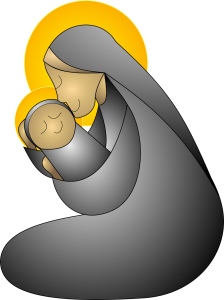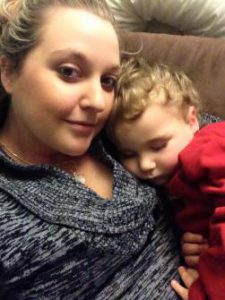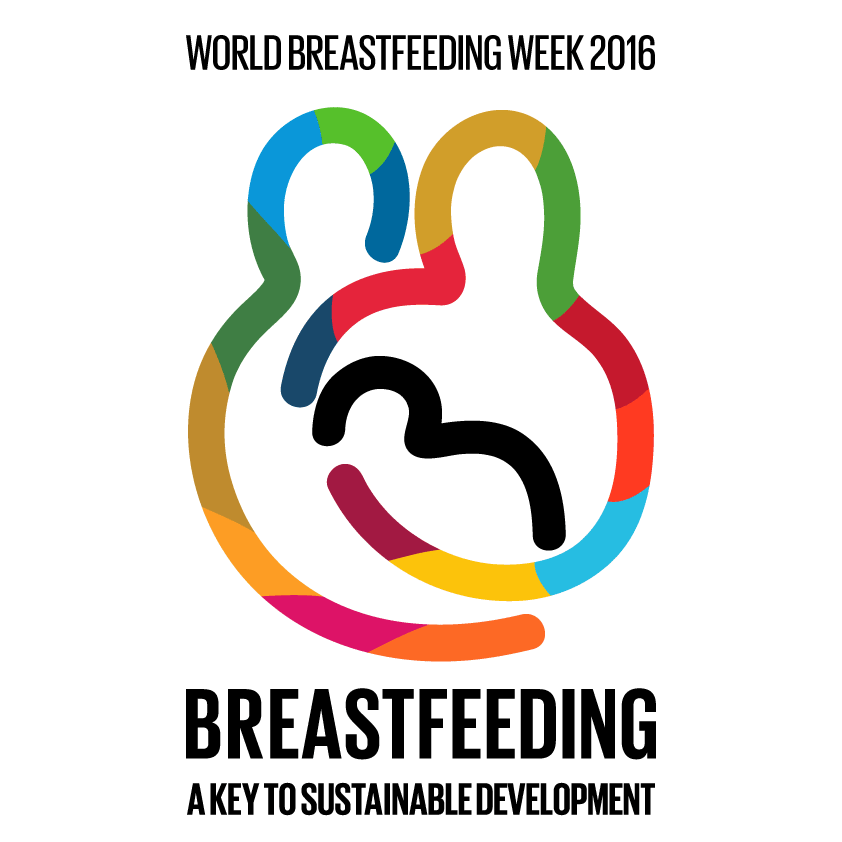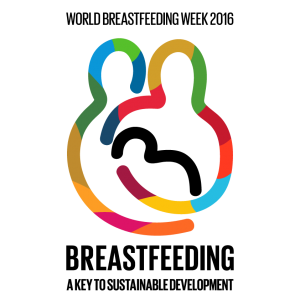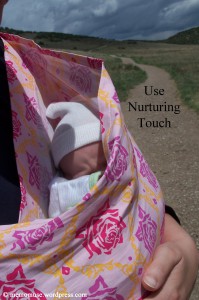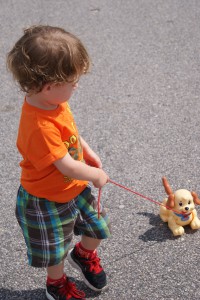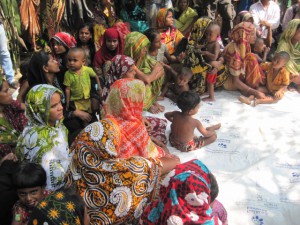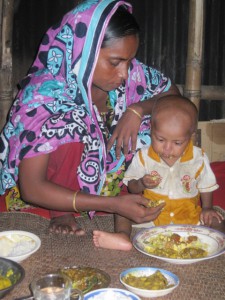 For so many women, breastfeeding was the turning point for our journey into Attachment Parenting. And one organization whom many of us have to thank for our introduction to both breastfeeding and Attachment Parenting International — certainly in the case of API’s cofounders whose roots were here — is La Leche League International.
For so many women, breastfeeding was the turning point for our journey into Attachment Parenting. And one organization whom many of us have to thank for our introduction to both breastfeeding and Attachment Parenting International — certainly in the case of API’s cofounders whose roots were here — is La Leche League International.
Dr. Jeanne Stolzer, Professor of Child and Adolescent Development at the University of Nebraska at Kearney, USA, whose research is known worldwide as an intelligent challenge to the current Western medical model that seeks to pathologize normal human behaviors, including breastfeeding, too, shares her beginnings in LLL. I heard her speak at a conference a few years ago.
“Most people think that because of the research I do, I was raised in a granola-eating, breastfeeding, bare-footed family,” said Stolzer. “Nothing could be farther from the truth. The first breastfeeding baby I ever saw was when I was 18 years old, and I was mortified. Five years later, I saw a woman with a PhD breastfeeding a three-year-old, and my immediate response was, ‘What was wrong with her?’”
Some years later, Stolzer herself was expecting a baby when a friend encouraged her to attend a LLL meeting.
“I was very reluctant, but I went,” said Stolzer. “I instantly felt like I was with kindred spirits.”
LLL led Stolzer to begin educating herself about breastfeeding. As she remembers, “I was reading and reading all this stuff and was getting madder and madder: Why didn’t my mother know this? Why didn’t my friends know this? And, gosh darn it, why didn’t my doctor know this?”
Where Did the Mammal in Us Go?
“For 99.9% of our time on this earth, we have been hunters or gatherers and we have been practicing esoteric mammalian parenting,” Stolzer said, meaning non-medicalized births, breastfeeding, and staying in close proximity to our babies. “Look at what, in just 100 years, we’ve done: We’re supposed to be the top mammal on the planet, but we’ve managed to completely erase the mammalism in our lives.”
Conception, pregnancy, birth, and breastfeeding are intricately linked together as one continuous process to give each baby the best start in life, Stolzer explains.
“Most people see these as separate. They’re not,” she said. “If you mess with one, you risk throwing off the whole connection.”
While there are a very small number of females in every mammal species unable to get pregnant, the United States has the highest infertility rate in the world among humans. But is there any wonder when we stop to look at what Western cultures are doing to the birthing and breastfeeding functions of this process?
Stolzer finds it comical that most mothers won’t touch a cigarette or a caffeinated drink while they’re pregnant – which is commendable – but then have no problem in going to a hospital and having powerful narcotics mainlined into their arm during labor and birth. In the United States, 38% of women are getting Cesarean sections when, naturally, only 1 to 3% of births might actually require medical intervention.
Then, mothers and their newborn babies are, more often than not, separated immediately after birth. If mothers are able to give birth vaginally, she is flooded with hormones – but by separating the mother from her baby, that hormone flow is interrupted. If the breastfeeding relationship isn’t challenged enough by separation, then it has to overcome the ordeal of a hormonally-deficient mother and a drug-affected baby. “It takes 138 muscles alone in the jaw to nurse, and if you’re drugged, they won’t work,” Stolzer said.
The truth is, most Western physicians are not educated in breastfeeding. To be so, they must go on to continuing education because medical schools don’t teach lactation.
“I think women do the very, very best they can, with the information they have at the time,” Stolzer said. “Breastfeeding decreases all forms of hospitalization, death, and prescription drug use. That’s amazing, but how many women who are formula-feeding know this?”
Introduction of Formula-Feeding
Formula was developed with the mechanization of the dairy industry, derived from whey, a byproduct of processing cow milk.
In 1910, only 2 to 13% of mothers formula-fed. After World War I, that statistic jumped to 65 to 70%, and the impression was that only the poor and the immigrants had to “resort” to breastfeeding. Formula-feeding had become a state symbol of wealth, and physicians were supporting that formula-feeding was superior to breastfeeding. The lesson learned here, says Stolzer, is to question your societal trends.
“Formulas are manufactured by pharmaceutical companies,” she said. “Look at who’s funding every study: If it’s a pharmaceutical company, don’t even read it – it’s propaganda.”
In reality, human milk is far better than any substitute milk. Human milk changes with each child, depending on the needs of that particular child during a particular time of the day, during a particular age of that child. Human milk – and breastfeeding, for that matter – quite simply, can’t be duplicated.
“Pumped milk is infinitely better than formula,” Stolzer said. “However, it would be a scientific fallacy to say that pumped milk is the same as milk from the human breast,” because of how breastmilk changes throughout the day, not to mention that feeding by a bottle misses the intricacy of the relationship aspects of breastfeeding.
Human milk is a dose-responsive specific variable, meaning the response is specific to the dose – or that the more that a baby is breastfed and the longer a baby is breastfed, the more benefits that breastmilk affords to the child, and the mother. Research that began in the 1920s clearly shows that breastfeeding reduces the risk of myriad physical and mental health conditions for both baby and mother – both through protective antibodies and enzymes, and the oxytocin and prolactin “love” hormones secreted with each breastfeeding interaction.
“Choosing not to breastfeed brings a halt to oxytocin and prolactin. This brings on the grief response in mammals,” Stolzer said. “That’s why we have 40 to 60% postpartum depression rates in this country – because the body believes that we’re grieving.”
In addition, it’s important to note the differences between cows and humans on an animal level. While both are mammals, humans and cows are not the same. Basically, there are two types of mammals on the earth:
- Caching – i.e., cows. These mammals give birth to young who are, soon after birth, able to walk, regulate their own temperature, and be left alone for periods of time while the mother forages for food. Feedings are meant to be spaced to allow this, and therefore, the milk produced is high-protein and high-fat.
- Carrying – i.e., humans. These mammals give birth to young who are unable to walk, regulate their own temperature, or stay quiet for long periods of time alone, and therefore must be kept in close physical proximity to the mother. Feedings are meant to be continuous and on demand, and the milk produced is low-protein and low-fat.
Quite simply, cow or soy milk formula would not be as good as human milk.
“It makes sense: We have such a different brain than a cow, and a soybean doesn’t even have a brain,” Stolzer said.
But mothers continue to treat their babies like that of caching mammals. This is evident not only in formula sales – it’s a $1 trillion industry – but also in the recent boom in sales of helmets meant to reshape the heads of babies who have flattened on one side because the baby spends more time lying down than being held.
Another important argument against formula-feeding is the increasing rate of food allergies in Western cultures. “The number-one allergen in human populations is dairy products,” Stolzer said. “The number-one ingredient in formula is dairy. Of course, we’re doing this.”
Extended Breastfeeding is Superior to Cultural Breastfeeding Standards
According to World Health Organization recommendations, babies must be breastfed at least two years to obtain optimal benefits. Developmentally, human children are designed to breastfeed well over two years of age. For example, permanent molar eruption doesn’t occur until the child is five to seven years old. In another example, a child’s sucking needs last for three to seven years – evidenced by prolonged thumb-sucking, pacifier use, and hair-sucking in older children.
The average breastfeeding weaning rate worldwide is three to four years. In the United States, weaning typically happens at only six weeks old, the time when women return to work outside the home. The breastfeeding research knowledge available clearly shows that if all women in the United States breastfed for just six months exclusively, the nation would save $3.6 billion a year, mostly in health care costs and time spent paying parents for sick time to stay home to care for their children. If they breastfed exclusively for one year, that savings would climb to $7 billion a year.
“Five thousand to 6,000 years ago, mothers were breastfeeding their children until about seven years old. They were ensuring the survival of the human species,” Stolzer said. “Not only is the human brain not done growing until the child is five to seven years old, but the human immune system is not fully developed for five to seven years.”
Breastmilk naturally has more antibodies available for the older child, because babies are designed to always be with their mothers. That’s why breastfed babies in child care centers still get sick – the antibodies in their mother’s breastmilk are designed to ward off family germs, not from the whole community. The antibody load naturally increases as the child becomes more mobile, Stolzer explains.
It’s time that Western cultures quit playing it safe when it comes to educating women about breastfeeding, Stolzer says. The benefits of breastfeeding are consistently dependent not only on the frequency and intensity of each nursing session but also on the duration.
“We used to tell women that any breastfeeding was good, but the truth is, for a baby breastfed for two weeks, his immunity looks the same as a baby never breastfed,” Stolzer said.
Worth the Work
One of the concerns of practicing Attachment Parenting is the physical work involved in the beginning, at a time when the baby’s natural sleeping and feeding schedule is so contrary to the parents’ pre-baby schedules. But Stolzer encourages parents to stick with it.
“I know it feels really intense right now – and it is really intense right now – but in the time between birth and death, this really intense time is very small,” she said. “Attachment Parenting does not ensure that babies won’t cry or make choices that will hurt you or make you so mad you could flip – but if you lay that foundation with Attachment Parenting, that path [of loving interaction] will always be there for them to find again.”

